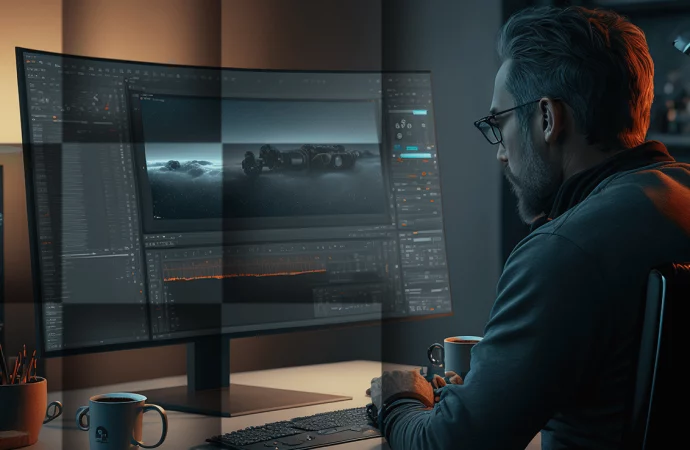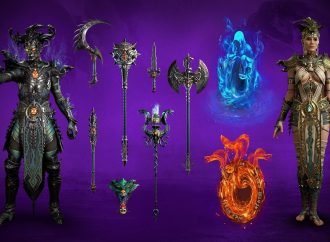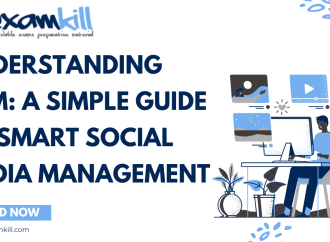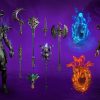Introduction Jumping into Unity game development can feel overwhelming at first. With its powerful engine, flexible tools, and huge community, Unity lets beginners and pros alike bring game ideas to life. In this guide, you’ll learn the core Unity tools, get simple tips and tricks, and follow clear steps to create your first game. Whether
Introduction
Jumping into Unity game development can feel overwhelming at first. With its powerful engine, flexible tools, and huge community, Unity lets beginners and pros alike bring game ideas to life. In this guide, you’ll learn the core Unity tools, get simple tips and tricks, and follow clear steps to create your first game. Whether you dream of 2D platformers, 3D adventures, or mobile puzzles, this article will give you a solid start—no prior coding or design experience needed.
1. Setting Up Your Unity Workspace
1.1 Download and Install Unity Hub
- Visit the Unity website and download Unity Hub.
- Install Unity Hub, then use it to add the latest Long-Term Support (LTS) version of Unity.
1.2 Create a New Project
- Open Unity Hub and click New Project.
- Choose a template (2D, 3D, or HDRP for high-end graphics).
- Name your project and pick a folder.
- Click Create—Unity will set up your workspace.
1.3 Familiarize Yourself with the Unity Interface
- Scene View: Where you place and arrange 3D or 2D objects.
- Game View: Preview your game as players will see it.
- Hierarchy Panel: Lists all objects in your scene.
- Project Panel: Shows your assets—scripts, models, textures.
- Inspector Panel: Edit properties of selected objects.
2. Exploring Core Unity Tools
2.1 The GameObject & Component System
- GameObjects: The basic building blocks (cameras, lights, characters).
- Components: Add behaviors (scripts, physics colliders, audio sources) to GameObjects.
Tip: Use empty GameObjects as containers to organize your scene hierarchy.
2.2 Unity Asset Store
- Access the Asset Store tab to find free and paid models, textures, scripts, and complete kits.
- Import assets directly into your project to save time on modeling or coding basics.
2.3 Prefabs for Reusable Objects
- Create a Prefab by dragging a configured GameObject into the Project panel.
- Use prefabs to spawn enemies, power-ups, or modular level pieces at runtime.
2.4 Terrain and ProBuilder (3D)
- Terrain Tool: Paint landscapes, add trees and grass, and sculpt hills for open-world games.
- ProBuilder: Create and edit simple 3D shapes (walls, floors, platforms) without external modeling software.
3. Writing Your First Script
3.1 Setting Up a C# Script
- Right-click in the Project panel > Create > C# Script.
- Name it (e.g., PlayerController) and double-click to open in your code editor (Visual Studio or VS Code).
3.2 Basic Script Structure
csharpCopyEditusing UnityEngine;
public class PlayerController : MonoBehaviour
{
public float speed = 5f;
void Update()
{
float move = Input.GetAxis("Horizontal");
transform.Translate(move * speed * Time.deltaTime, 0, 0);
}
}
- MonoBehaviour: Base class for Unity scripts.
- Update(): Runs every frame.
- Input.GetAxis: Reads keyboard or joystick input.
- Time.deltaTime: Ensures smooth movement across frame rates.
3.3 Attaching Scripts to GameObjects
- Drag the script from Project panel onto a selected GameObject in the Hierarchy.
- In the Inspector, set the speed value and press Play to test.
4. Adding Physics and Collision
4.1 Rigidbody Component
- Add Rigidbody to GameObjects to enable real-world physics (gravity, mass, drag).
- Control physics-based movement by applying forces in your script:
csharpCopyEditRigidbody rb;
void Start() {
rb = GetComponent<Rigidbody>();
}
void FixedUpdate() {
rb.AddForce(Vector3.forward * 10f);
}
4.2 Colliders for Interaction
- Attach colliders (Box, Sphere, Capsule) to detect overlaps.
- Use OnCollisionEnter or OnTriggerEnter in scripts to respond to collisions:
csharpCopyEditvoid OnTriggerEnter(Collider other) {
if(other.CompareTag("Coin")) {
Destroy(other.gameObject);
}
}
5. Building User Interfaces (UI)
5.1 UI Canvas and Elements
- Create a Canvas for UI elements like buttons, text, and sliders.
- Add a Button: Right-click Canvas > UI > Button. Customize its text and appearance.
5.2 Handling Button Clicks
- Create a UI script:
csharpCopyEditusing UnityEngine;
using UnityEngine.SceneManagement;
public class UIManager : MonoBehaviour {
public void StartGame() {
SceneManager.LoadScene("Level1");
}
}
- Attach script to an empty GameObject.
- In the Button’s Inspector, click + under OnClick, drag the GameObject, and select UIManager.StartGame.
6. Managing Audio
6.1 Audio Sources and Clips
- Add Audio Source to an object and attach audio clips (music, sound effects).
- In script, play sounds with:
csharpCopyEditAudioSource audio;
void Start() {
audio = GetComponent<AudioSource>();
audio.Play();
}
6.2 Audio Mixer for Control
- Use Audio Mixer to adjust volume, apply effects, and create groups (music, SFX) for balance.
7. Optimization Tips and Tricks
7.1 Use Quality Settings
- Go to Edit > Project Settings > Quality to adjust texture resolution, shadows, and anti-aliasing.
7.2 Combine Meshes and Batches
- Use Static Batching for non-moving objects and Dynamic Batching for similar moving objects to reduce draw calls.
7.3 Level of Detail (LOD)
- Create LOD Groups for 3D models with multiple meshes of decreasing detail to improve performance at distance.
7.4 Profile Your Game
- Use the Profiler window to find CPU, GPU, memory spikes, and optimize problem areas.
8. Testing and Building Your Game
8.1 Play Mode Testing
- Regularly test changes in the Game View. Use Maximize on Play for full-screen testing.
8.2 Build Settings
- Open File > Build Settings.
- Add open scenes to Scenes in Build.
- Choose platform (PC, Android, iOS) and click Build and Run.
- Configure player settings like resolution, icon, and bundle identifier in Player Settings.
8.3 Distribute Your Game
- PC: Distribute .exe or upload to platforms like itch.io or Steam.
- Mobile: Generate APK for Android or build for iOS and publish on Google Play or App Store.
9. Learning Resources and Community
- Unity Learn: Official tutorials and courses at learn.unity.com.
- YouTube Channels: Brackeys, Unity’s official channel, and Blackthornprod offer beginner-friendly guides.
- Forums & Discord: Unity forums, r/Unity3D, and various Discord servers for peer support.
- Asset Store: Find templates and plugins to speed up development.
Conclusion
Starting with Unity game development is easier than ever thanks to its intuitive Unity tools, vast documentation, and active community. By setting up your workspace, mastering the interface, writing simple scripts, and using physics and UI components, you can create engaging games quickly. Remember optimization tips like batching and profiling to keep performance smooth. Finally, test on your target platform and share your creation with the world. With practice and patience, Unity lets you transform ideas into playable games—so dive in, experiment, and enjoy building your first title!






















